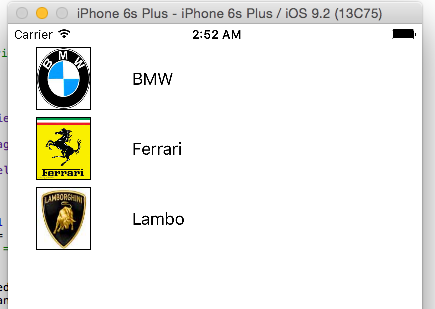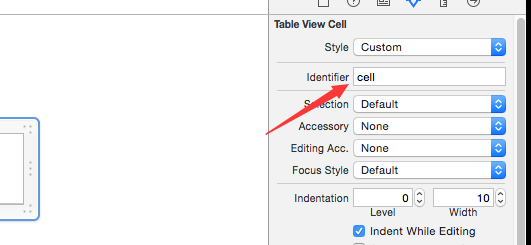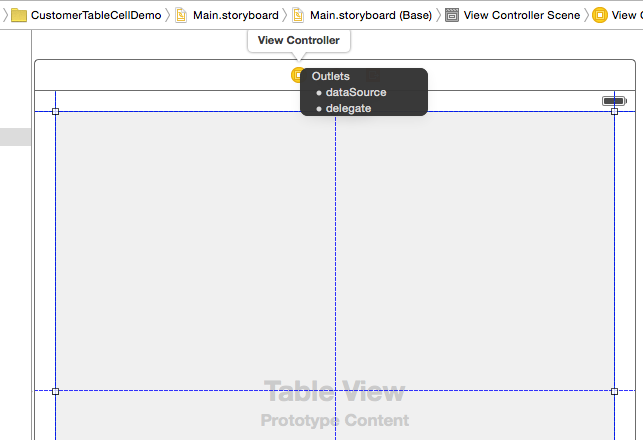【swift学习笔记】三.使用xib自定义UITableViewCell
使用xib自定义tableviewCell看一下效果图

1.自定义列
新建一个xib文件 carTblCell,拖放一个UITableViewCell,再拖放一个图片和一个文本框到tableviewcell上

并给我们的xib一个标识

为了学习,我这里的xib和后台的class是分开建的。我们再建一个cocoa touch class文件名称为CarCellTableViewCell继承自UITableViewCell
并把我们的xib和新建的CarCellTableViewCell建立联接

在CarCellTableViewCell里建立和xib的图片和文本框的输出
import UIKit class CarCellTableViewCell: UITableViewCell { @IBOutlet weak var cellImg: UIImageView! @IBOutlet weak var lbCell: UILabel! override func awakeFromNib() { super.awakeFromNib() // Initialization code cellImg.layer.borderWidth = 1 cellImg.layer.masksToBounds = true //cellImg.layer.cornerRadius = 31 } override func setSelected(selected: Bool, animated: Bool) { super.setSelected(selected, animated: animated) // Configure the view for the selected state } }
2.关联cell和tableview
1. 在main.storyboard上拖放一个uitableview,并在后台代码建立输出联接

1.在load事件里注册xib
2.在tableveiw的方法里得到当前的列,指定数据源。
import UIKit class ViewController: UIViewController, UITableViewDelegate, UITableViewDataSource { @IBOutlet var tableView: UITableView! var tableData: [String] = ["BMW", "Ferrari", "Lambo"] override func viewDidLoad() { super.viewDidLoad() // Do any additional setup after loading the view, typically from a nib. let cellNib = UINib(nibName: "carTblCell", bundle: nil) tableView.registerNib(cellNib, forCellReuseIdentifier: "cell") } override func didReceiveMemoryWarning() { super.didReceiveMemoryWarning() // Dispose of any resources that can be recreated. } func tableView(tableView: UITableView, numberOfRowsInSection section: Int) -> Int { return tableData.count } func tableView(tableView: UITableView, cellForRowAtIndexPath indexPath: NSIndexPath) -> UITableViewCell { let cell: CarCellTableViewCell = self.tableView.dequeueReusableCellWithIdentifier("cell") as! CarCellTableViewCell cell.lbCell.text = tableData[indexPath.row] cell.cellImg.image = UIImage(named: tableData[indexPath.row]) return cell } func tableView(tableView: UITableView, didDeselectRowAtIndexPath indexPath: NSIndexPath) { print("\(indexPath.row)") } func tableView(tableView: UITableView, heightForRowAtIndexPath indexPath: NSIndexPath) -> CGFloat { return 70 } }
作者:李鹏
本文版权归作者和博客园共有,欢迎转载,但未经作者同意必须保留此段声明,且在文章页面明显位置给出原文连接,否则保留追究法律责任的权利。


 浙公网安备 33010602011771号
浙公网安备 33010602011771号